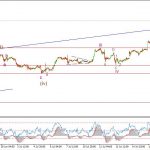A worried tone at the open of the trading week proved fleeting as Wall Street returned online after the Easter holiday. Gold prices reversed from intraday gains as recovering sentiment weighed against Treasury bonds and bid up yields, boosting the US Dollar along the way. Not surprisingly, this undermined support for non-interest-bearing and anti-fiat assets.
Tellingly, financials led US shares upward. An index tracking the sector’s representation within the S&P 500 closely parallels the 2017 rate hike outlook implied in Fed Funds futures. This speaks to expectations of continued tightening even amid first-quarter slowdown fears, although the hawks’ exuberance has waned somewhat. The probability of a June hike is 50.2 percent now, down from 63.2 percent last week.
Crude oil prices seemed to get caught up in macro-level capital flows, with the USD-denominated Brent and WTI benchmarks falling as the greenback found a lifeline. The monthly EIA Drilling Productivity report may have compounded downward pressure. It said US shale output will hit 5.2 b/d in May, the highest since November 2015, and upgraded its April forecast to 5.1 b/d from 4.96 b/d projected previously.
The data docket is relatively quiet from here, with API inventory figures at the forefront. Familiarly hawkish comments from Kansas City Fed President Esther George should not be particularly surprising and so might pass with little fanfare. On balance, that is likely to keep broad-based sentiment trends in control, particularly as market-wide liquidity levels rebuild with the return of European participation.
Worries about the French presidential election may sour sentiment anew. First-round voting begins on April 23 and leading candidates are clustered near 20 percent in the polls, making for unusually high uncertainty about who will make it into the final face-to-face contest. This fuels fears that right and left extremes Marine Le Pen and Jean-Luc Melenchon, neither of which excite the markets, may be the last left standing.














Leave A Comment